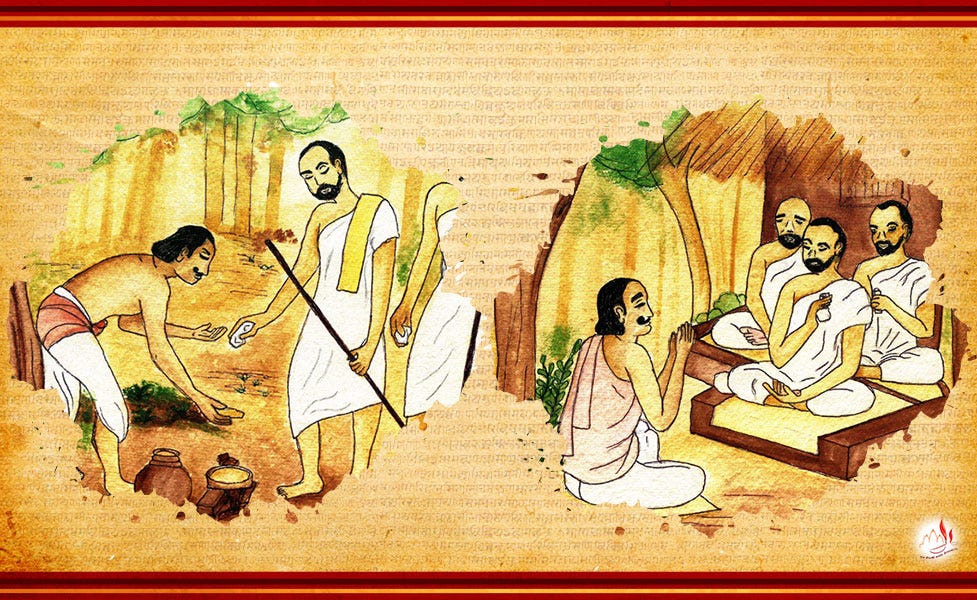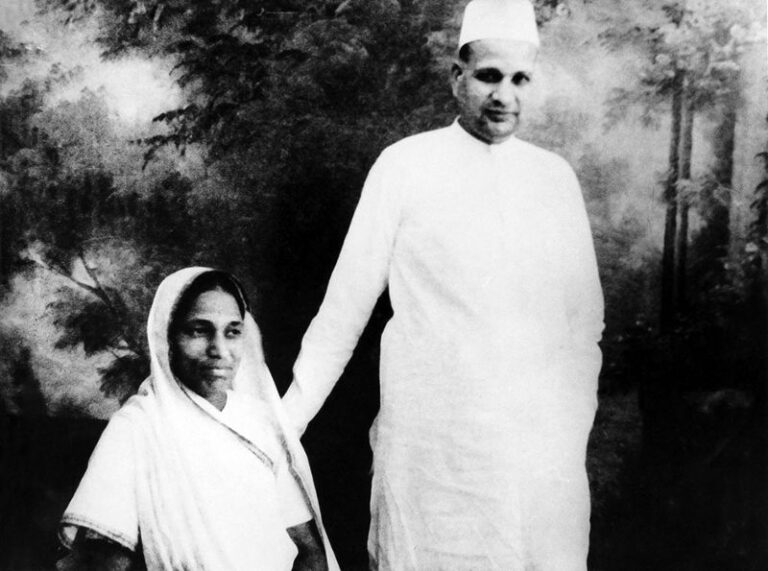The Aryan and the Vedic Age: India’s Ancient Civilization
Imagine yourself standing on the vast plains of the Indian subcontinent, sometime around 1500 BCE. The wind whispers through the tall grasses as you watch a new people arriving from the northwest, slowly but surely making their way across this fertile land. These are the Aryans, a nomadic tribe with chariots, cattle, and a strong oral tradition. As they journey across the rivers and valleys, they carry with them the seeds of a culture that would come to define the next thousand years of Indian history—the Vedic Age.
The Aryans were not conquerors in the traditional sense, with swords and armies laying waste to everything in their path. Rather, they brought with them ideas, language, and a worldview deeply intertwined with the natural elements, their gods, and a cosmic order. Over time, these ideas would blend with local customs, leading to the creation of a civilization that would leave a lasting mark not only on India but on the whole of human history.
But let’s take it slow. Let’s first understand who the Aryans were and how they came to India.
The Mysterious Aryans
The term Aryan has been the subject of much debate, but in the context of ancient history, it refers to a group of Indo-European-speaking peoples who migrated from Central Asia into northern India around 1500 BCE. They didn’t come as an army but rather as small groups of cattle herders. It was their way of life, deeply rooted in pastoralism, that shaped the early cultural landscape of northern India. Their primary wealth was cattle, and their mobility gave them an advantage as they spread across vast territories.
In this early period, they moved into the regions now known as Punjab and the Gangetic plains, areas rich with rivers and fertile land. Unlike the sedentary life of city dwellers like the Harappans (from the earlier Indus Valley Civilization), the Aryans were a wandering people, and their society was organized around clans and tribes, each led by a chieftain or raja. Their political organization was fluid, lacking any form of centralized monarchy. Power rested in assemblies of warriors, and the idea of kinship held more sway than rigid institutions.
But what really sets the Aryans apart is their oral tradition—especially their sacred hymns, the Vedas.
The Vedic Age Unfolds
As we step into the Vedic Age, which takes its name from the four Vedas—the oldest and most revered scriptures of Hinduism—we find ourselves immersed in a world where everything is connected to the cosmic order, known as Rta. It’s a world where the gods are close at hand, where sacrifices (yajnas) are performed with meticulous care to keep the universe running smoothly. The Rigveda, the oldest of the four Vedas, is a collection of hymns sung in praise of gods like Indra, the warrior god of thunder and rain, Agni, the fire god, and Varuna, the upholder of cosmic law.
The early Vedic period (1500–1000 BCE) was a time of simplicity. The Aryans lived in modest settlements, and their society was still primarily pastoral. Cattle were the primary form of wealth, and the yajna, or fire sacrifice, was a crucial part of religious life. As the Aryans spread further into the Indian subcontinent, particularly into the Gangetic plains, their way of life began to evolve. The dense forests of the Ganges valley were cleared for agriculture, marking a shift from nomadic herding to settled farming.
This change in lifestyle brought about significant shifts in social structure. The simple tribal society of the early Aryans began to give way to more complex forms of organization. The varna system, a division of society into classes, began to emerge. At first, it was a flexible structure based on occupation: the Brahmins (priests), Kshatriyas (warriors), Vaishyas (merchants and farmers), and Shudras (laborers). Over time, this system would harden into a more rigid caste hierarchy, but in the early Vedic period, it was still relatively fluid.
Economy in the Vedic Age
The economy of the Vedic Age, especially in the early period, was primarily pastoral, with cattle playing a central role. Cows were considered a form of wealth, and much of the economy revolved around herding and trade in cattle. The word for war in the Rigveda, gavishti, literally translates to “a desire for cows,” highlighting the economic importance of these animals. Aryans measured wealth in terms of cattle, and most conflicts were over control of grazing lands and herds.
As time progressed, particularly in the Later Vedic period (1000–600 BCE), the economy became more diversified. Agriculture began to gain prominence, especially after the Aryans settled in the fertile Gangetic plains. Wheat, barley, and rice became staple crops, with rice cultivation becoming particularly important in the later stages. The shift from a nomadic to a settled agrarian society allowed for surplus food production, which led to the development of trade and commerce.
With the rise of agriculture, the practice of metalworking also flourished. The Aryans used tools made of bronze and later iron, which allowed for more efficient farming. The development of iron tools during this period, particularly iron plows, enabled more extensive clearing of forests for agriculture, further boosting productivity.
Trade also began to flourish during the Later Vedic period, both within the region and with neighboring areas. Barter was the primary mode of exchange in the early period, but as society advanced, there are references to early forms of currency and more sophisticated trade networks.
Society in the Vedic Age
Aryan society during the Vedic Age was organized along tribal lines, with each tribe led by a chief (raja) who was supported by a group of warriors (kshatriyas). The society was primarily patriarchal, with men holding positions of power and authority, though women, particularly in the early Vedic period, enjoyed greater freedoms than they would in later times.
The most significant social development during this period was the emergence of the varna system. In the early Vedic period, this was a relatively flexible division based on occupation, but as society became more settled and complex, the system became more rigid. The four primary varnas were:
1. Brahmins – The priestly class, responsible for performing religious rituals and maintaining the sacred knowledge of the Vedas. They held a high status in society due to their role in religious and intellectual life.
2. Kshatriyas – The warrior class, responsible for protection and governance. The raja, or tribal chiefs, usually came from this group, and they played a vital role in the political and military affairs of the time.
3. Vaishyas – The merchant and farming class. As agriculture and trade expanded, the Vaishyas gained importance in the economy, engaging in commerce, cattle-rearing, and agricultural production.
4. Shudras – The laboring class, consisting of those who worked the land or served the other three varnas. The Shudras were often marginalized and held the lowest status in the social hierarchy.
Women in the Vedic Age had a relatively higher status, especially in the early period. They participated in religious rituals, were allowed to choose their husbands, and had access to education. However, as society became more complex and the caste system more rigid, women’s roles became more restricted, and patriarchal norms began to dominate.
Another key aspect of Vedic society was the importance of religion and ritual. The Vedic people believed in a pantheon of gods, many of whom represented natural forces like thunder, fire, and wind. Rituals, particularly fire sacrifices, were central to maintaining cosmic order. The Brahmins, as the keepers of sacred knowledge, held a crucial role in performing these rituals and guiding society’s spiritual life.
The Spiritual Heart of the Vedic Age
The Vedic texts weren’t just religious hymns—they were the foundation of the Aryans’ understanding of the universe. They believed that the gods were responsible for maintaining the cosmic order, and it was through their hymns and rituals that humans could ensure the continued stability of the world.
The yajna, or fire sacrifice, was central to this belief system. Through the careful offering of milk, grains, and animals into the fire, the Aryans believed they could communicate with the gods, ensuring their favor and the continued harmony of the world. Agni, the fire god, acted as the intermediary between humans and the divine, carrying offerings up to the heavens.
During this period, the concept of karma—the idea that actions in this life could affect one’s future—began to take shape,though it would become more fully developed in later Hindu philosophy. In the Vedic worldview, life was a delicate balance of duty, sacrifice, and devotion to the gods, all working in harmony with the great cosmic law.
The Later Vedic Period: Change and Complexity
As we move further into the Vedic Age, towards what historians call the Later Vedic Period (1000–600 BCE), things become more complex. The Aryans had now spread across much of northern India, settling in the fertile Gangetic plains. This period saw the rise of powerful kingdoms, as the simple tribal system began to give way to more organized forms of governance.
The nature of religious life also evolved. While the early Aryans focused on simple sacrifices to maintain cosmic order, the later Vedic period saw the emergence of more philosophical questions. The Upanishads, composed during this time, explored deeper metaphysical concepts such as the nature of the soul (Atman) and the ultimate reality (Brahman). These texts would go on to form the foundation of much of later Hindu thought.
Society, too, was changing. The varna system became more rigid, with Brahmins gaining significant power due to their role in religious rituals. The warrior class, or Kshatriyas, also rose in prominence as kingdoms and political power structures became more defined. Women, who had enjoyed relatively more freedom in the early Vedic period, found their roles more restricted as patriarchal norms became entrenched.
Legacy of the Vedic Age
By the time we leave the Vedic Age, around 600 BCE, India has been transformed. The Aryans, who had once been a nomadic people, are now settled agriculturalists, living in kingdoms with defined social hierarchies. The Vedic religion has laid the groundwork for what will become Hinduism, and the ideas of karma, dharma, and moksha are beginning to take root in the collective consciousness.
This was an age of transition, where the old ways of nomadic life slowly gave way to the settled civilizations that would eventually blossom into the great Indian empires of the future. The Vedic Age wasn’t just a time of hymns and sacrifices—it was the crucible in which much of Indian culture was forged. The echoes of that age can still be heard today, in the chants of Hindu priests, the rhythm of classical Indian music, and the stories that continue to shape the spiritual and cultural landscape of the subcontinent.
As we step back from this era, one cannot help but marvel at the profound influence it left behind. The Aryans may have arrived as wanderers, but they left as the architects of a civilization that would endure for millennia.



look at these guys https://pinup-play-game.space/jet-lucky-2-aviation-themed-crash-game/
look at this now https://onlinecrashgame.space/en/cricket-x/